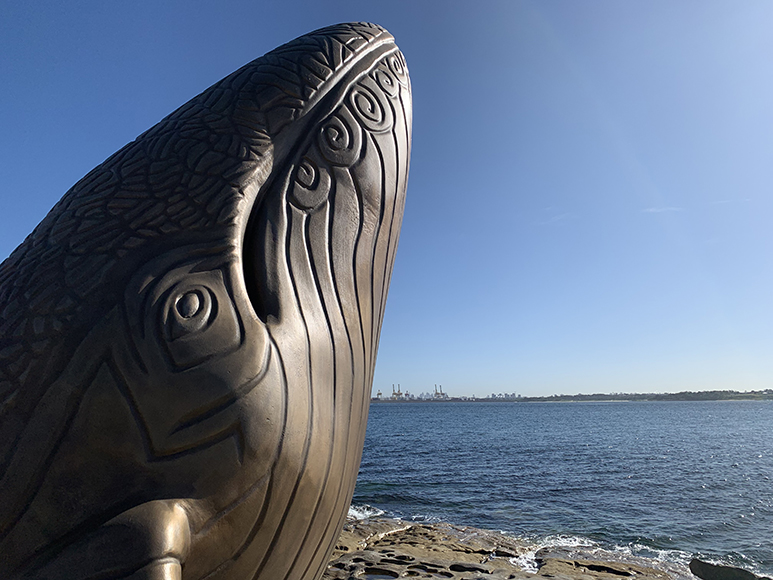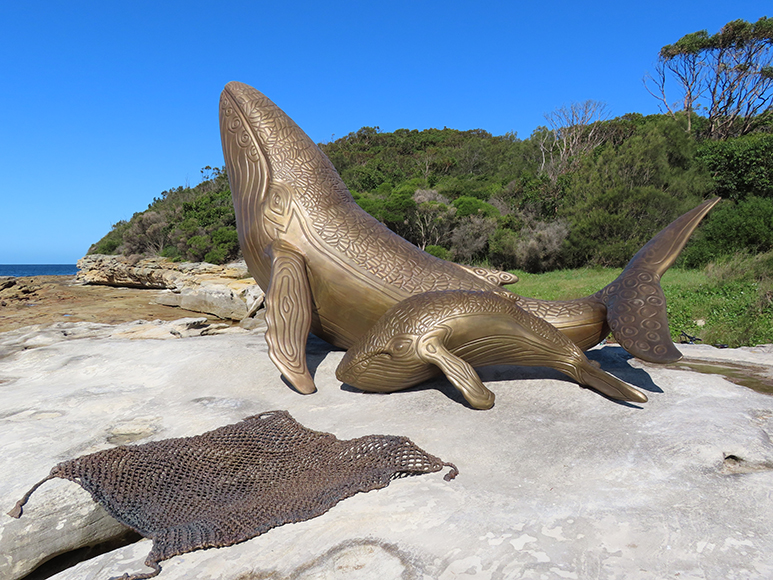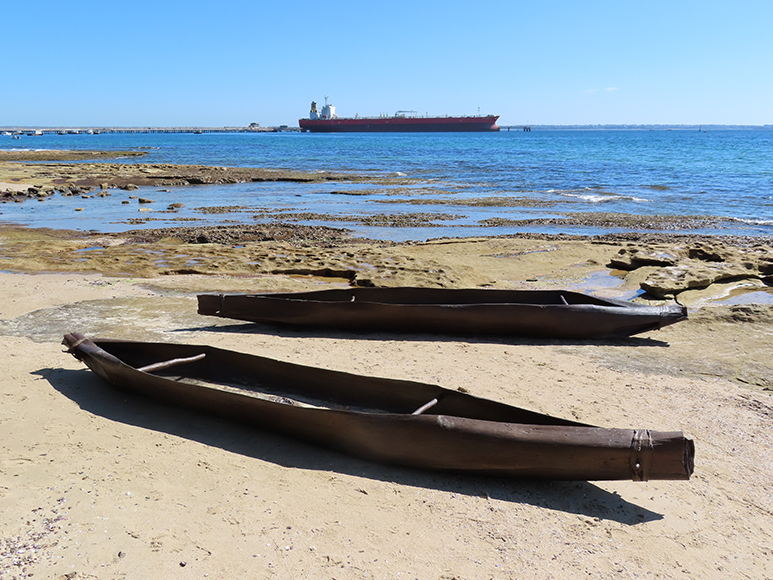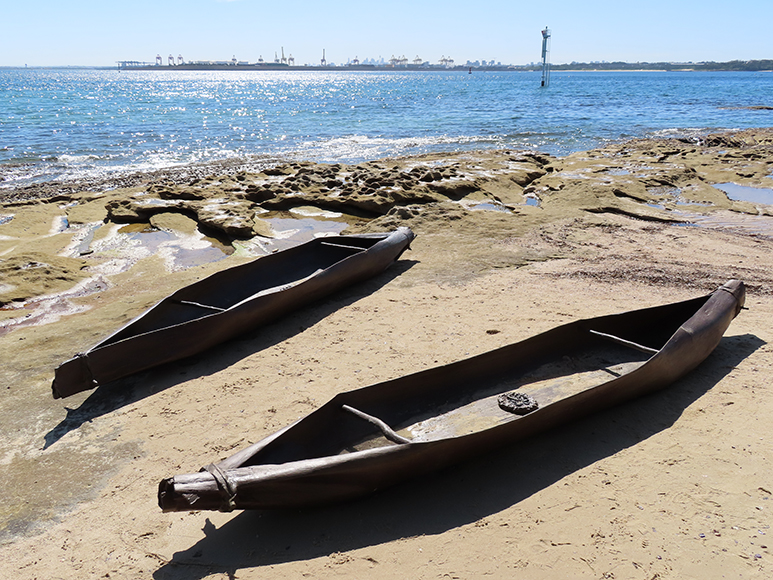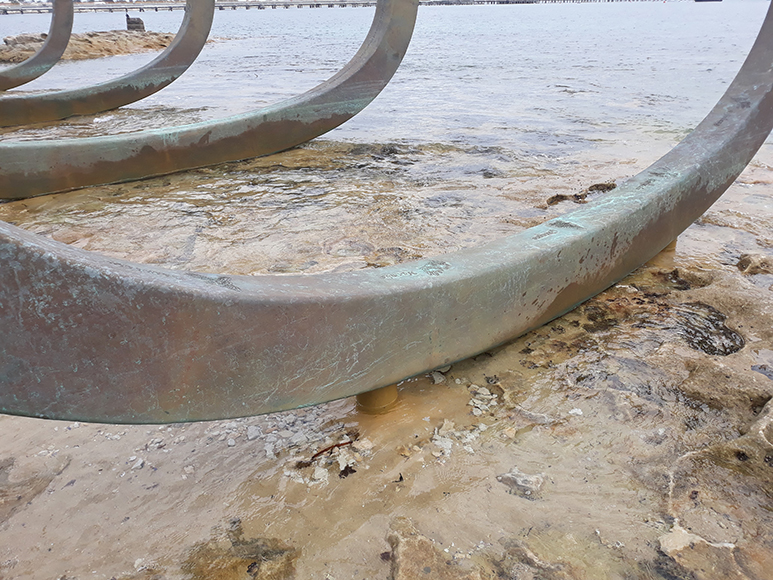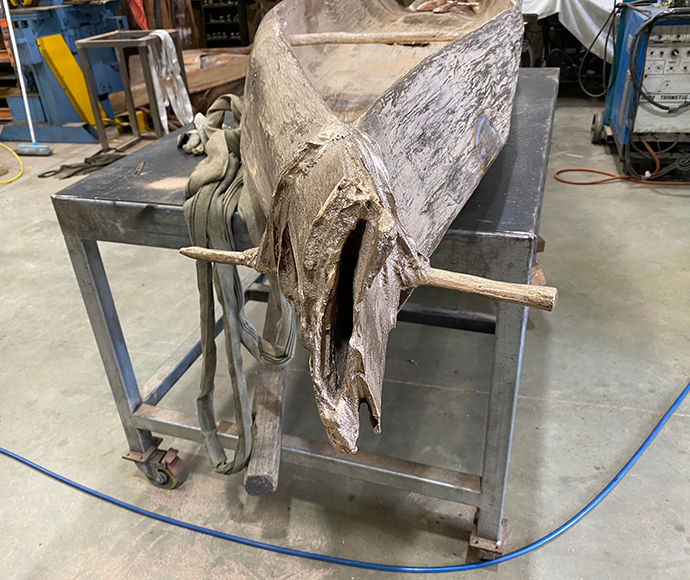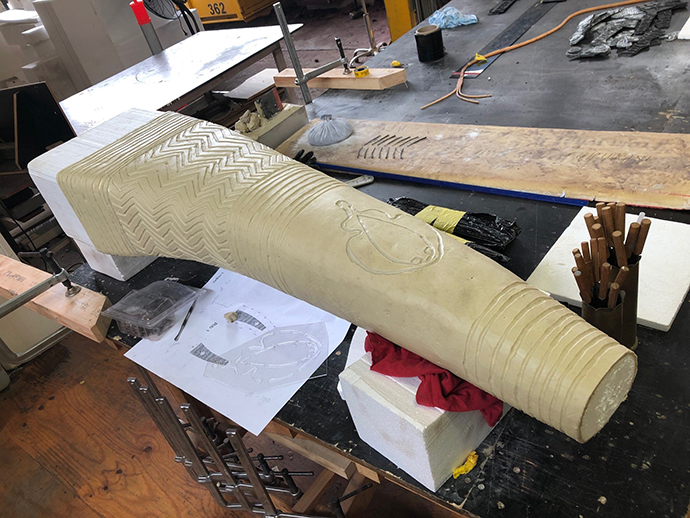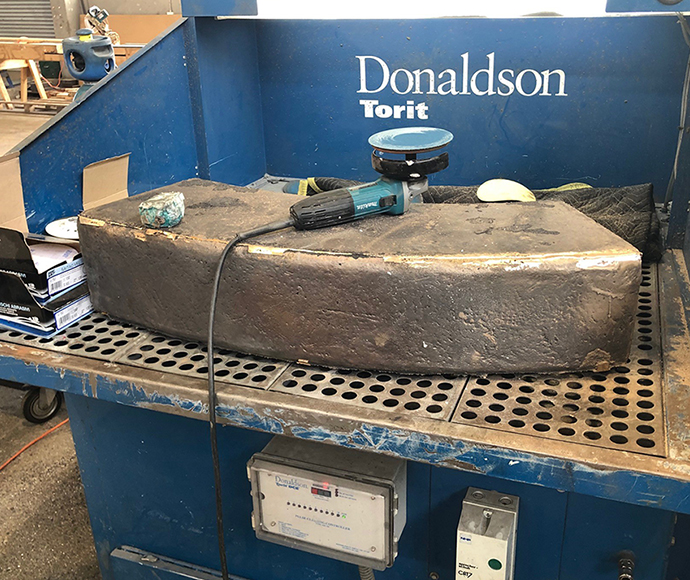Three bronze sculptures by Aboriginal artists have been installed along the foreshore to commemorate the encounter between the local Aboriginal people and the crew of the HMB Endeavour. The sculptures were installed in April 2020 to commemorate the 250th anniversary of this event and to share stories of the many layers of significance of this special site.
The works were commissioned by National Parks and Wildlife Service (NPWS) in close collaboration with key stakeholders including the La Perouse Local Aboriginal Land Council. A smoking ceremony was held on 20 April 2020 prior to installation of the sculptures commencing.
The Eyes of the Land and the Sea was created by Aboriginal artist Alison Page and Nik Lachajczak with UAP Australia. Alison Page explained this sculpture, 'brings together different perspectives on our shared history – the bones of a whale and the ribs of a ship – and sits in the tidal zone between the ship and the shore where the identity of modern Australia lies. The first encounter between James Cook and the First Australians was a meeting of 2 very different knowledge systems, beliefs and cultures. The abstraction of the ribs of the HMB Endeavour and the bones of the Gweagal totem the whale, speaks to the different perspectives of those first encounters, providing a conjoined narrative of 2 very different world-views.'
The Whales and Canoes were created by Aboriginal artist Theresa Ardler and Julie Squires with ThinkOTS. Theresa describes the whale as, 'the dreaming figure for the Dharawal speaking people and an integral part of our community and beliefs. My Gweagal Clan looked out for whales from the Kurnell Peninsula. My Elders and my people still do this today, as it brings a strong sense of a spiritual connection on country, remembering we were once a part of the ocean, but now are land people, although still spiritually connected to both natural elements.'
In explaining the story behind the canoes, Theresa said, ‘the Gweagal Clan traditionally fished from stringy bark canoes. They lit fires in their canoes on a base of white clay for use when fishing at night. During their 1770 observations, both Lieutenant James Cook and naturalist Joseph Banks recorded this practice.’ The sculptures have been cast from a Nuwi locally made by Dean Kelly, John Kelly and David Payne.
The purpose of the sculptures is to promote understanding and reflection on the different perspectives that people have of the events of 1770.
The Kamay 2020 Project is a joint NSW and Commonwealth governments project to commemorate the 250th anniversary of the meeting of two cultures at Kurnell in the Kamay Botany Bay National Park.
The Kamay 2020 Project Board selected works as they are sensitive, balanced and include story-telling of both Aboriginal and European viewpoints of the arrival of the HMB Endeavour. Art is a powerful tool for telling human stories and interpreting historical events. We want these sculptures to promote understanding and reflection on the different perspectives that people have of the events of 1770.
